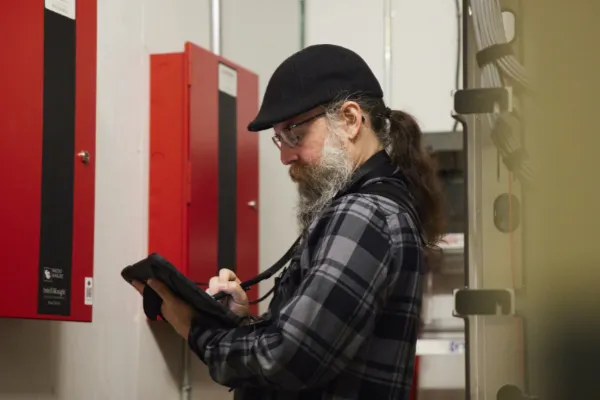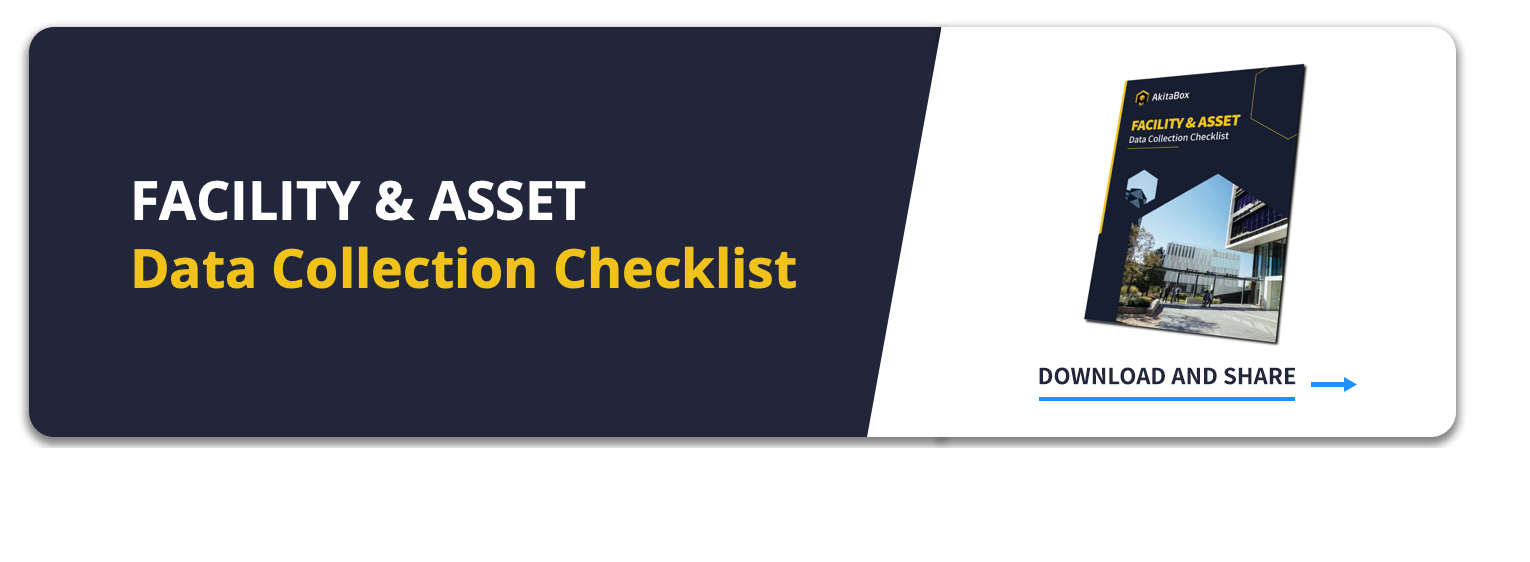Tip 1: Timing is Everything
Determine the best, most convenient time to do data collection when it will cause the least disruption to daily operations. Find out if there are other things happening in the building that could interfere with data collection, such as floor waxing, an important client visit, or testing that can’t be disrupted.
Be sure to announce the date(s) of the data collection to all occupants ahead of time. Let everyone know data collectors will be walking around and going into every room.
Tip 2: Plan Out the Day(s)
Data collection isn’t something you want to approach willy-nilly. You’ll have a much better chance of completing your data gathering on time if you have a plan of attack.
Keep an eye on the weather when determining which areas to do earlier vs. later. For example, collect data in outdoor areas when the weather won’t be too cold, hot, or wet. You may want to visit the roof early in the day before it gets too hot and bright.
If you have more than one person gathering information, make sure each person has clearly defined sections they will focus on.

Also, don’t forget about any special access or protection that may be needed:
- Will the data collectors be given master keys?
- Will they need to have an escort with them at all times?
- Are there any restricted areas you’ll need permission to enter?
- Are there clean rooms where you can’t have germs?
- Is special clothing or protection required in any areas?
Tip 3: Have the Right Gear
Dressing appropriately is a must. Make sure your data collectors wear comfortable shoes. It’s also a good idea to wear layers – and bring the right outerwear for snowy or rainy weather if needed.
Don’t forget safety gear you may need: work gloves, steel-toe boots, safety glasses, hard hat, high-visibility vest, etc.
Think about how you’re going to carry everything you’ll need to do data collection. Will you need:
- A tool belt or bag?
- A harness/sling for a tablet?
- A belt clip for work gloves?
- A strap for safety glasses?
Try to be as hands-free as possible, since you’ll be climbing ladders, opening panels, and otherwise using your hands a lot.
If you’re using a data collection software tool like AkitaBox Capture, check out our recommendations for tablets, cases, and slings – Using AkitaBox in the Field: the Right Tools for the Job.
Tip 4: Don’t Forget Your Floor Plans
Data collection time is the perfect opportunity to update your floor plan. As you’re walking the facility, have a copy of your most recent floor plans handy so you can confirm room measurements, mark the location of windows and doors, and draw any needed revisions.
Bring a measuring tape or a laser measure with you so you can get accurate room dimensions and place windows and doors in the right spots.
A word of caution: floor plan updating can be time consuming, so account for that in your data collection planning.

Tip 5: Use Data Collection Software
A good asset data collection software tool lets you capture your data in a digital format where each piece of information is tied to a specific asset and location on your floor plan. This makes it much easier and faster to collect, organize, view, search, and update all of your asset data.
AkitaBox Capture is one such tool. It’s a mobile app for iOS and Android tablets that streamlines the entire data collection process. With just a few taps, you can:

- Pin an asset’s location onto your digital floor plan
- Fill in all the required data fields using dropdown menus and text recognition technology
- Take and attach photos to each asset
- Make notes on the asset’s current condition
- Draw revisions directly on the floor plan with the markup tool
Want to see AkitaBox Capture in action? WATCH THE VIDEO.
When using data collection software, make sure you:
- Charge tablets fully and have a backup battery (an iPad usually lasts about half a day on one charge)
- Set the device’s photo settings to highest resolution (typically not the default)
- Ensure a good wi-fi connection (bring a hotspot or other portable wi-fi with you if needed)
- Download your floor plans into the system ahead of time
You can find more of my tips in AkitaBox’s Facility & Asset Data Collection Checklist. It also includes the main asset categories and asset data fields you should gather.
